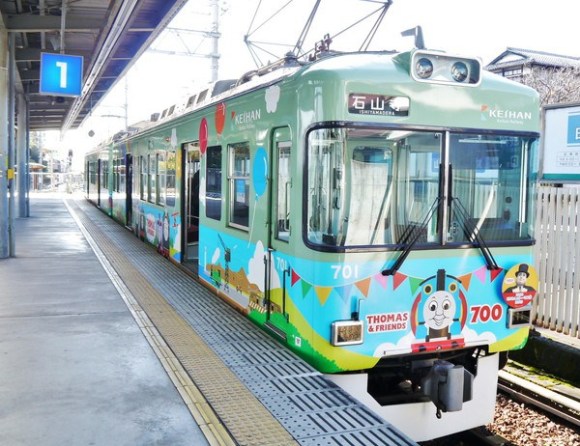
Coming from abroad to live in Japan, there’s a lot to love–and there’s a lot to be frustrated about as well. One thing that nearly everyone loves about Japan though is the trains! With many of us coming from rural areas where you either drive or walk, being able to hop on a train pretty much any time anywhere can sometimes feel nearly miraculous. Tired? Distracted? Had too much to drink? Raining? None of that matters, because you’re on a train!
And we’re not the only ones who think so either. Today we’ve compiled a list of foreign residents’ favorite things about trains in Japan. Check them out and see if your favorites made the list!
The number one thing that is always mentioned when it comes to trains in Japan is punctuality. In major metropolitan areas and even in rural areas, you can count on the trains running on time–usually to the minute. When things get really busy or hectic–like during the Tokyo morning rush–you can expect trains on major lines to come every three or four minutes. Sometimes, you’ll even see trains arriving one right after the other. Now, that’s obviously not to say that other countries don’t have punctual trains–a fact people sometimes seem to forget–but Japanese trains are so punctual that when they do end up late, it’s almost like a natural disaster!
In fact, trains being delayed is almost always an acceptable excuse for showing up late, but what if your boss doesn’t believe you? Easy! Station attendants hand out little slips of paper stating that the train was delayed, giving you all the proof you need. You can get one of these “certificates of lateness” for a delay of even just five minutes! And trains running late is such a big deal that it will even show up on the news. There are also numerous smartphone apps to help you check the current railway conditions so you’ll know if you should expect delays or not. Fortunately, in big cities like Tokyo or Osaka, there are so many trains that you can often easily and smoothly change routes to get around a delay.
While Japanese trains tend to be very punctual, stuff happens, right? One helpful thing that Japanese railways do is give announcements over the loudspeakers when the trains are late even by a few minutes. It won’t get you home any sooner, but at least you’ll know what’s going on!
One drawback of relying on the trains is the timetables, in rural areas, the trains often stop running surprisingly early–often well before midnight. In urban areas though, the trains usually start as early as four in the morning and run until 1:00am.
Another strange but cool thing about trains in Japan is the precise stopping points at the platform. Most stations have markings on the ground to let passengers know exactly where to wait–and if a train does overshoot the stopping point by a few centimeters, they’ll actually back up until everything is correctly aligned.
As we mentioned before, the trains aren’t just in urban centers. You can get around most of the country with nothing more than a few tickets, which is certainly a relief for those of us without drivers licenses or the money to pay for taxis! Of course, rural areas aren’t quite as convenient as urban centers, where you can easily live without a car, but you can still get by, or at least to a more urban center, without too much trouble. Another great thing about being able to take the train instead of driving is getting a quick nap in before or after work–and the trains run steadily enough that you can often spot other commuters asleep–standing up!
While many buildings in Japan don’t have proper insulation or central heating, we’re happy to report that the trains do! In the winter, you can count on the cars being warm, and in the summer, they’re cooled to comfort. And most lines also have cars with “weak air-conditioning” if you find the regular cars too cold or too hot for whatever reason. Overhead fans are also supplied to keep the air circulating, so the air doesn’t usually get too stale.
One interesting feature of some train cars is the doors: While many lines will leave the doors open when stopped at stations, during winter or summer, the doors are often closed to save energy. So how do you get on? Just hit the button next to the door to open it up! But what about while you’re waiting for the train arrive? Depending on the train station, you can find temperature-controlled enclosures in which to hide from the elements.
Another great–but somewhat rare–feature is electrical outlets on limited express trains. It’s certainly a great boon for a businessperson trying to get work done, a parent trying to keep their kids entertained, or even a guy who wants to take his Wii U on the bullet train…
Of course, there are plenty of businesspeople running from a meeting to the train to the office without much time to stop for a bite to eat. Which makes kiosks on the platforms another great feature of train stations in Japan. Though we’re sure that train stations the world over have kiosks to make traveler’s lives easier, in Japan they will often have special goods or food that can only be bought in that station. These make for great souvenirs–or snacks! Also, in larger cities, stations are often directly under major shopping areas, where you can find rows of stores in and around the gates. This makes shopping a lot easier! You can even get on the subway, do some shopping, have lunch and coffee, and get back home without once ever seeing the open sky. That might sound a bit depressing, but it’s actually really helpful when the rainy season (or the hot season, or the snowy season!) starts.
Nearly every Japanese train car also has priority seating for the elderly, disabled, pregnant women, and people with infants. The idea is that these seats should be given up for those who need them when they board the train. Whether or not that will actually happen is another story, but we can say that in most cases people follow the rules and give the seats up as they should.
As you would expect, trains covering long distances are usually equipped with bathrooms–but many of them also have showers as well! Though we’re not really keen on the idea of washing up on a train, it would certainly be helpful for folks on a tight schedule.
In addition to getting food and a shower on the go, some Japanese trains are also equipped with sleeper cars. These cars have electronic keypad locks to help you sleep peacefully without having to worry about someone barging in or stealing your bags.
Another random but awesome thing about Japanese trains is their seats. While we find the bench seats on trains to be pretty comfortable, they’re also super helpful in an emergency too!
One of the best things about traveling via rail in Japan is the IC cards, which you can simply swipe over the turnstile sensor to get through the gate without having to stop walking for even half a second. By charging the card–either with cash or your credit card–you can briskly get in and out of any station without worrying about buying tickets, and they usually work while still inside your wallet, so there’s no need to fumble about to find the thing.
As you would expect from any mass transit system, Japanese train companies have lost-and-found centers. Unlike what you might expect, you can usually get your lost belongings back. We know of at least one gentleman whose luggage–complete with a very expensive desktop computer–left behind in the station: He was able to get it back the next day with everything intact!
In terms of helpfulness, we also really want to applaud the way Japanese railway companies go out of their way to assist wheelchair users. For those who need assistance, a member of the staff will be on hand to help people on and off the train at the platform. They also use small ramps to help wheelchair users easily and comfortably board the trains when the gap is a little larger and potentially more hazardous to cross.
Another helpful aspect of Japanese train stations is the signs! Almost all signs have station names written in multiple languages and even hiragana – the Japanese phonetic script – for those not yet familiar with kanji characters or tricky station names. You are almost guaranteed to see the names of stations and major landmarks in English as well as Chinese and Korean–pretty convenient!
Some trains even have video screens installed above the doors. These screens show a plethora of information–in a variety of languages–about stops, which side of the train the doors will opening on at the next stop, which exits to take to get to specific places, and even news stories! They also show TV commercials with subtitles, which, depending on your perspective, is either incredibly obnoxious or a cool way to practice reading.
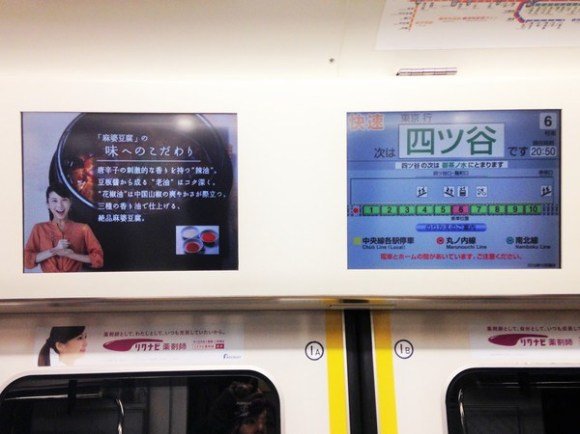
But it’s not just the signage that’s eye-catching–you can sometimes spot trains with unique paint jobs or seasonal advertisements on the sides.
One of the cuter parts of riding Japanese trains is watching parents with little kids. Obviously, children are fascinated by the world around them and want to climb up on the seats to look out the window. In almost every case, the mother or father will patiently undo the child’s shoes before letting the little tyke stand on the seat. A simple courtesy, but one we really appreciate!
In addition to keeping the seats clean, the stations themselves are also kept spotless. People generally do a very good job of putting their trash in the trash cans, which are usually divided into plastic, paper and bottles or drinks bins. Sometimes you will spot a magazine or newspaper forgotten on the rack above the seat–but we’re not sure anyone would complain about getting some free reading material! Well, unless it’s one of the risqué manga the businessmen love to read–openly!–on the trains. We imagine someone might complain about that.
One of the downsides of Japanese trains, though, is the overcrowding: Some stations will even have part-time staff to help push passengers into the train so that the doors will close! We’re not sure if this is really a good thing or not… Another problem with the crowding are the sexual molesters who take advantage of the situation. This has led to some women-only cars during certain times of day, to give Japanese ladies a safe place to get to work in peace.
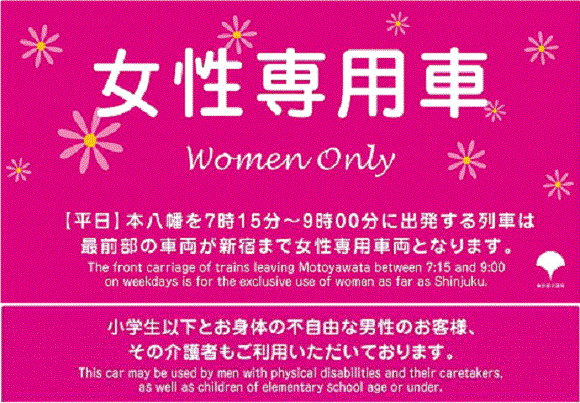
So, what about the other passengers? Well, while you can expect to get to know the back of your neighbor’s head more intimately than your own fingernails when stuck standing during rush hour, we have to say that generally they’re not too bad! Of course, one thing you will hear is that everyone lines up and waits patiently for the trains to arrive. We’ve found this to mostly be true–but the second the doors open, those lines get a bit messy and there are always a few rogues who think they deserve to get on first. Even so, people almost always avoid pushing–in general it’s all very organized chaos.
One area where this is more clear is the careful order in which people either get off or on the train. You can almost always see people on the platform waiting for passengers to disembark before getting on–which is fortunate. Otherwise, it would be impossible for anyone to move!
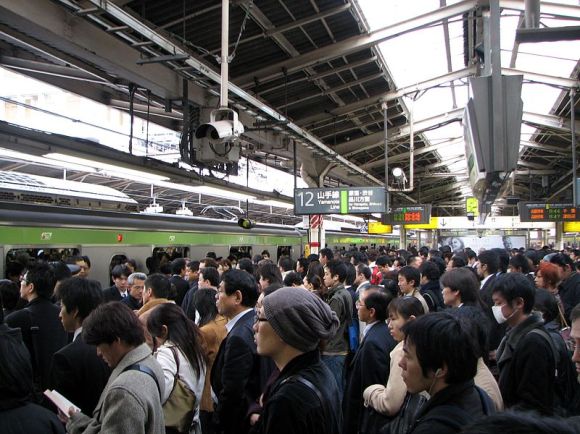
In addition to keeping the stations and trains clean, Japanese passengers are usually pretty quiet too. Of course, drunk revelers on Saturday night can get pretty noisy, but for most of the day, the trains are nearly silent. It’s almost too quiet, especially when you consider just how many people ride on trains in Japan every day.
It turns out that the top 23 busiest train stations in the world are all in Japan! Of course, the data for the statistics is a little old now, so things may have changed, but we’d be surprised if Japanese stations had fallen very far. A simple walk through Shinjuku Station should convince you just how busy things can get!
So what do you guys think? Are Japanese trains great or not? For those of you who come from places with extensive train networks, let us know how your home railways compare! We’re sure there are lots of great train lines all around the world, and we would love to heard about them!
Unless otherwise noted, all photos by RocketNews24


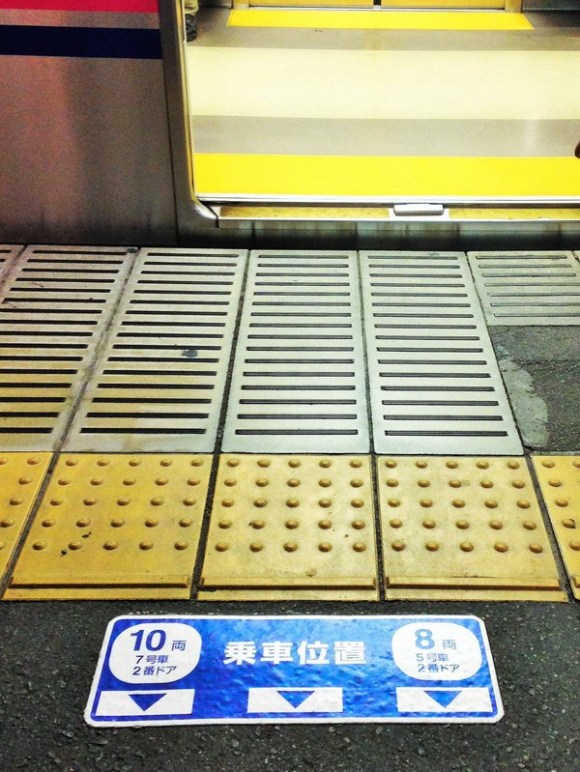
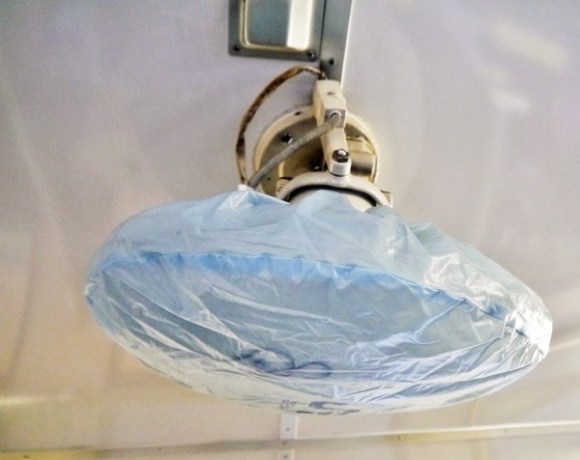

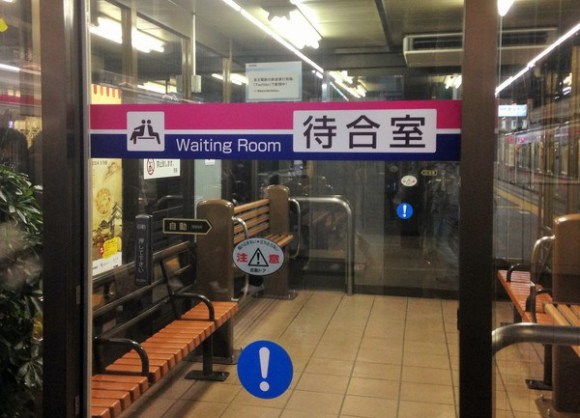
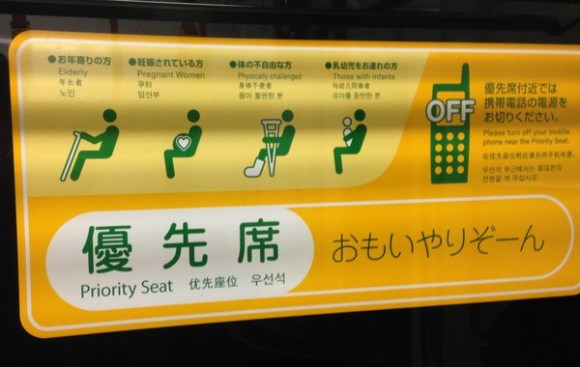
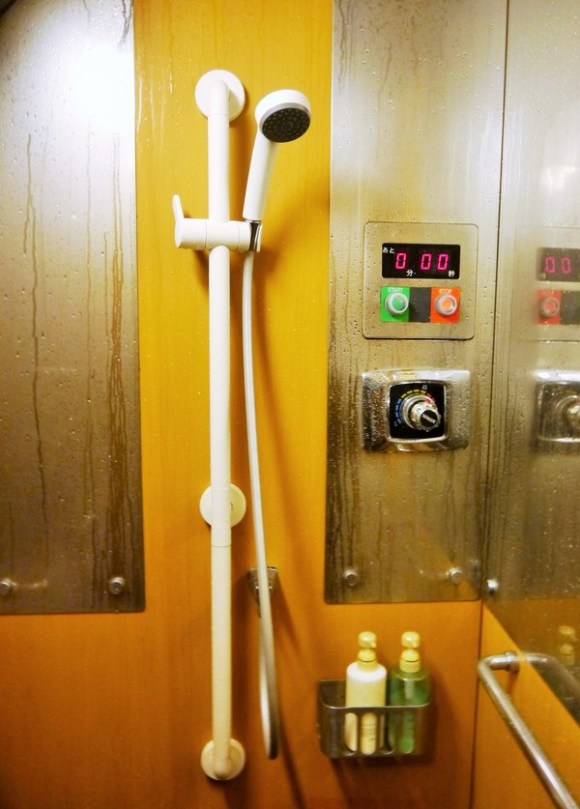
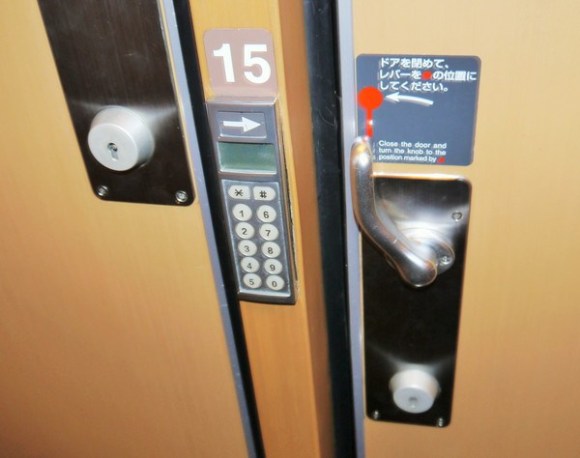
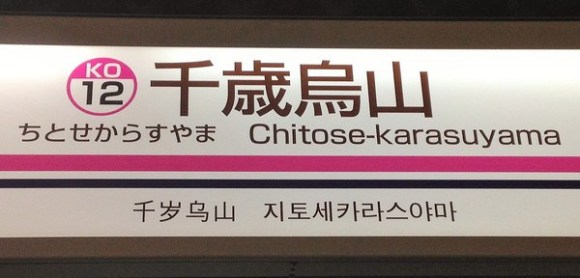
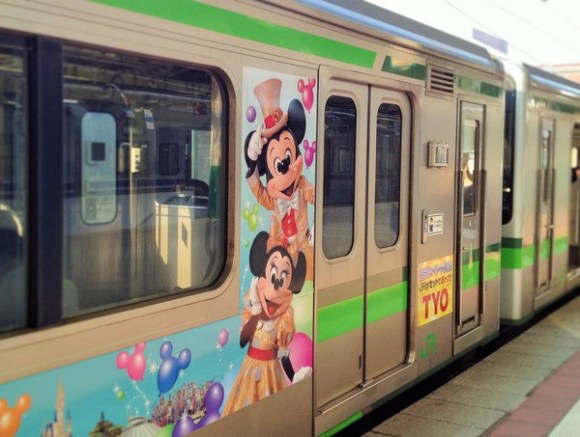
 Four pieces of important advice for foreigners in Japan moving from the countryside to Tokyo
Four pieces of important advice for foreigners in Japan moving from the countryside to Tokyo Short clip shows us what it’s like to ride the train or subway in Japan in a wheelchair 【Video】
Short clip shows us what it’s like to ride the train or subway in Japan in a wheelchair 【Video】 We channel Sen from Ghibli’s Spirited Away and travel to a Japanese train station by the sea
We channel Sen from Ghibli’s Spirited Away and travel to a Japanese train station by the sea What’s it like traversing Tokyo using only wheelchair accessible routes?
What’s it like traversing Tokyo using only wheelchair accessible routes? 22 February turned out to be a bad day for Tokyo train commuters, as freak delays showed
22 February turned out to be a bad day for Tokyo train commuters, as freak delays showed Beautiful new Final Fantasy T-shirt collection on the way from Uniqlo【Photos】
Beautiful new Final Fantasy T-shirt collection on the way from Uniqlo【Photos】 Randomly running into a great sushi lunch like this is one of the best things about eating in Tokyo
Randomly running into a great sushi lunch like this is one of the best things about eating in Tokyo Disney princesses get official manga makeovers for Manga Princess Cafe opening in Tokyo
Disney princesses get official manga makeovers for Manga Princess Cafe opening in Tokyo Foreign English teachers in Japan pick their favorite Japanese-language phrases【Survey】
Foreign English teachers in Japan pick their favorite Japanese-language phrases【Survey】 Is the new Shinkansen Train Desk ticket worth it?
Is the new Shinkansen Train Desk ticket worth it? Kyushu-exclusive Black Mont Blanc goes nationwide in a “Special” way
Kyushu-exclusive Black Mont Blanc goes nationwide in a “Special” way Osaka’s creepy cute mascot speaks for first time, adds more fuel the creepy OR cute debate【Video】
Osaka’s creepy cute mascot speaks for first time, adds more fuel the creepy OR cute debate【Video】 Osaka icon loses legs, restaurant says famous crab is exhausted
Osaka icon loses legs, restaurant says famous crab is exhausted Cappuccino Ramen becomes super popular in Japan, but is it worth the hype?
Cappuccino Ramen becomes super popular in Japan, but is it worth the hype? Pizza Hut releases a turtle pizza that looks like a Teenage Mutant Ninja Turtle
Pizza Hut releases a turtle pizza that looks like a Teenage Mutant Ninja Turtle We try out “Chan Ramen”, an underground type of ramen popular in the ramen community
We try out “Chan Ramen”, an underground type of ramen popular in the ramen community New Studio Ghibli bedding sets are cool in all senses of the word
New Studio Ghibli bedding sets are cool in all senses of the word Our Japanese reporter visits Costco in the U.S., finds super American and very Japanese things
Our Japanese reporter visits Costco in the U.S., finds super American and very Japanese things New Pokémon cakes let you eat your way through Pikachu and all the Eevee evolutions
New Pokémon cakes let you eat your way through Pikachu and all the Eevee evolutions There’s a park inside Japan where you can also see Japan inside the park
There’s a park inside Japan where you can also see Japan inside the park Japanese convenience store packs a whole bento into an onigiri rice ball
Japanese convenience store packs a whole bento into an onigiri rice ball Hanton rice — a delicious regional food even most Japanese people don’t know about, but more should
Hanton rice — a delicious regional food even most Japanese people don’t know about, but more should Final Fantasy, Kingdom Hearts, and Dragon Quest pet product line announced by Square Enix
Final Fantasy, Kingdom Hearts, and Dragon Quest pet product line announced by Square Enix Studio Ghibli releases Kiki’s Delivery Service chocolate cake pouches in Japan
Studio Ghibli releases Kiki’s Delivery Service chocolate cake pouches in Japan Japan’s bone-breaking and record-breaking roller coaster is permanently shutting down
Japan’s bone-breaking and record-breaking roller coaster is permanently shutting down New definition of “Japanese whiskey” goes into effect to prevent fakes from fooling overseas buyers
New definition of “Japanese whiskey” goes into effect to prevent fakes from fooling overseas buyers Foreign passenger shoves conductor on one of the last full runs for Japan’s Thunderbird train
Foreign passenger shoves conductor on one of the last full runs for Japan’s Thunderbird train Kyoto bans tourists from geisha alleys in Gion, with fines for those who don’t follow rules
Kyoto bans tourists from geisha alleys in Gion, with fines for those who don’t follow rules Studio Ghibli unveils Mother’s Day gift set that captures the love in My Neighbour Totoro
Studio Ghibli unveils Mother’s Day gift set that captures the love in My Neighbour Totoro Domino’s Japan now sells…pizza ears?
Domino’s Japan now sells…pizza ears? Toyota built a life-sized Miraidon Pokémon and are letting people test drive it this weekend
Toyota built a life-sized Miraidon Pokémon and are letting people test drive it this weekend New Japanese KitKat flavour stars Sanrio characters, including Hello Kitty
New Japanese KitKat flavour stars Sanrio characters, including Hello Kitty Sales of Japan’s most convenient train ticket/shopping payment cards suspended indefinitely
Sales of Japan’s most convenient train ticket/shopping payment cards suspended indefinitely Sold-out Studio Ghibli desktop humidifiers are back so Totoro can help you through the dry season
Sold-out Studio Ghibli desktop humidifiers are back so Totoro can help you through the dry season Japanese government to make first change to romanization spelling rules since the 1950s
Japanese government to make first change to romanization spelling rules since the 1950s Ghibli founders Toshio Suzuki and Hayao Miyazaki contribute to Japanese whisky Totoro label design
Ghibli founders Toshio Suzuki and Hayao Miyazaki contribute to Japanese whisky Totoro label design Doraemon found buried at sea as scene from 1993 anime becomes real life【Photos】
Doraemon found buried at sea as scene from 1993 anime becomes real life【Photos】 Tokyo’s most famous Starbucks is closed
Tokyo’s most famous Starbucks is closed One Piece characters’ nationalities revealed, but fans have mixed opinions
One Piece characters’ nationalities revealed, but fans have mixed opinions We asked a Uniqlo employee what four things we should buy and their suggestions didn’t disappoint
We asked a Uniqlo employee what four things we should buy and their suggestions didn’t disappoint Princesses, fruits, and blacksmiths: Study reveals the 30 most unusual family names in Japan
Princesses, fruits, and blacksmiths: Study reveals the 30 most unusual family names in Japan Studio Ghibli’s new desktop Howl’s Moving Castle will take your stationery on an adventure
Studio Ghibli’s new desktop Howl’s Moving Castle will take your stationery on an adventure Some of the passengers on China’s rural railways are literally pigs
Some of the passengers on China’s rural railways are literally pigs Kyoto train station thanks commuters for saving life of passenger who fell on the train tracks
Kyoto train station thanks commuters for saving life of passenger who fell on the train tracks Tsushima no Miya Station: The Japanese train station open only two days a year
Tsushima no Miya Station: The Japanese train station open only two days a year Japan’s Moonlight Nagara train service ends, leaving a hole in overnight rail travel
Japan’s Moonlight Nagara train service ends, leaving a hole in overnight rail travel The Japanese train station where staff bow to departing passengers
The Japanese train station where staff bow to departing passengers Drunken salaryman’s solution to barely missing the last train: Ride on the outside of it
Drunken salaryman’s solution to barely missing the last train: Ride on the outside of it Woman kills self jumping onto train tracks, delay causes conductor to jump off tracks at other station
Woman kills self jumping onto train tracks, delay causes conductor to jump off tracks at other station Amazing time-lapse-style video shows 150-year history of the growth of train stations in Japan
Amazing time-lapse-style video shows 150-year history of the growth of train stations in Japan End-of-the-line exploring in Japan: Visiting Hashimoto Station
End-of-the-line exploring in Japan: Visiting Hashimoto Station Get your chills on the rails with Kyoto’s Ghost Train 【Video】
Get your chills on the rails with Kyoto’s Ghost Train 【Video】 Better know a train nerd: 36 different classifications for Japan’s “densha otaku”
Better know a train nerd: 36 different classifications for Japan’s “densha otaku” The 10 best places for young, single people to live in and around Tokyo【Survey】
The 10 best places for young, single people to live in and around Tokyo【Survey】 Making trains meow-r fun: Japanese station master cats (and bunny!) strut their fluff【Pics】
Making trains meow-r fun: Japanese station master cats (and bunny!) strut their fluff【Pics】 Why do seats at some Japanese station platforms face away from the trains?
Why do seats at some Japanese station platforms face away from the trains? Tokyo subway bribes people with free noodles to get them to take earlier, non-rush hour trains
Tokyo subway bribes people with free noodles to get them to take earlier, non-rush hour trains
Leave a Reply